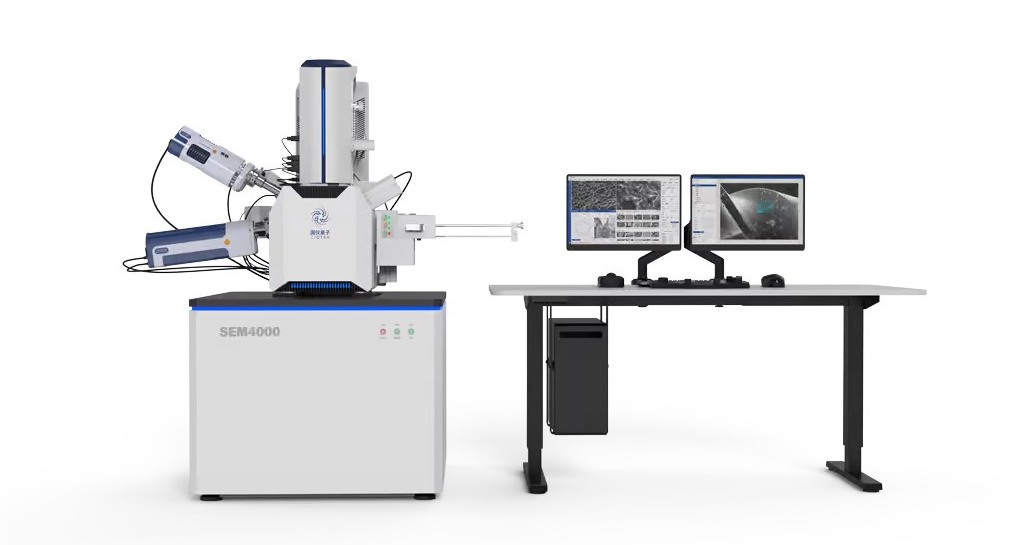Members Login

Channels
Special Offers & Promotions
Five unexpected applications of scanning electron microscopy

Exploring how SEM technology is transforming industries beyond the lab
Scanning electron microscopy (SEM) is widely recognised in traditional scientific fields like biology and chemistry, but its capabilities extend into many unexpected areas. SEM’s ability to capture high-resolution surface images makes it a vital tool in industries as diverse as forensic science and archaeology. Here Dan Merryweather, product manager at laboratory instrument distributor SciMed, explores five lesser-known applications of SEM.
1. Forensic science
In the world of forensic science, SEM is instrumental in its ability to analyse trace evidence. It can be used to examine gunshot residue, fibres and hair at the microscopic level, providing critical links in criminal investigations.
Under low vacuum imaging modes, small features such as residual skin tags on hair follicles can be used to determine, for example, if a hair fell out naturally or was pulled. Under high magnification, bullet casings can be examined to identify characteristics markings which can link a bullet to a specific weapon used to fire it.
The distribution and morphology of gun powder residues can be used to determine not only if a gun was fired by an individual but with sufficient accuracy to determine even the hand used when wielding the weapon.
2. Archaeology
SEM plays an important role in archaeology by enabling researchers to examine ancient artefacts with unmatched precision. It can reveal wear patterns on tools and the composition of pigments in artwork, offering insights into the materials and techniques used by our ancestors.
This level of analysis can enrich our understanding of the historical and cultural practices that have shaped modern societies. As a non-destructive method of analysis, SEM can be used to examine the microstructure of materials to explore their manufacture and day-to-day use, with the insights this provides into the life of our ancestors, while preserving these important artifacts of history and heritage.
3. Food and beverage
In the food and beverage sector, SEM is key to maintaining product safety and quality. It provides detailed examinations of food surfaces and packaging, detecting contaminants or defects that could compromise safety. Rapid X-ray analysis enables high throughput scanning of materials for dangerous elements such as lead and heavy metals.
By ensuring compliance with stringent quality standards, SEM helps protect consumers and supports brands in maintaining their reputation for reliability. The high magnifying power of electron microscopes enables food scientists to explore how the processing of foodstuffs changes properties like texture and viscosity.
4. Biological research
Biological and medical research increasingly relies on an understanding of cell systems down to the scale of individual molecules. SEM has become an increasingly important tool in this field providing researchers insights into the invisible micro- world that cells inhabit.
With the latest improvements in low-vacuum imaging the interaction between individual cells can be observed with minimal sample preparation, retaining the natural state of the delicate cell membrane.
Electron microscopy is becoming the preferred method for analysing individual proteins. The latest techniques in cryo-EM allows researchers to generate accurate molecular structures of complex proteins down to angstrom-scale resolutions, greatly improving throughput compared to older X-ray crystallography methods.
5. Environmental studies
SEM is making strides in environmental studies, particularly in the analysis of soil and water samples. For instance, SEM is used to assess the quality of water during processing and wastewater treatment, with sufficient power to detect viral and organic contaminants, ensuring compliance with environmental standards.
The technique is also valuable in air quality research, where it is used to identify dangerous contaminants such as asbestos fibres and pollutant microparticles, contributing to efforts to protect ecosystems and public health.
SEM’s versatility and precision continue to open new doors for a wide range of unconventional fields.
About SciMed
Since its founding in 1979, Scientific & Medical Products (SciMed) has been a highly successful distributor of laboratory and process equipment. It exclusively represents a number of leading manufacturers in the UK and Ireland and has recently been appointed the distributor for several companies in France and other selected regions around Europe. The company’s focus is on the promotion, sales, service and support of innovative and world-class products to customers in industry and academia.
Media Partners


